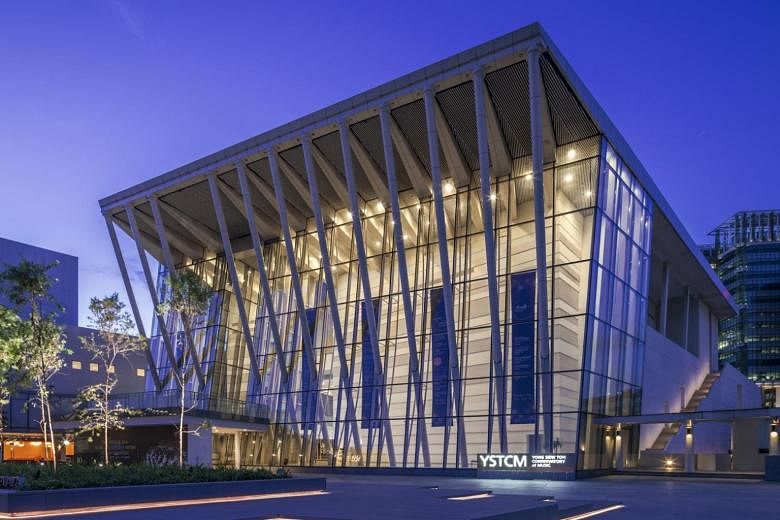REVIEW / CONCERT
YONG SIEW TOH CONSERVATORY ORCHESTRA SERIES: MASAAKI SUZUKI CONDUCTS PULCINELLA
Masaaki Suzuki (conductor),
Ryo Terakado (guest concertmaster),
Yong Siew Toh Chamber Ensemble
Yong Siew Toh Conservatory
Orchestra Conservatory Concert Hall
Last Saturday
Renowned conductor and returning Ong Teng Cheong Professor in Music at the Yong Siew Toh Conservatory of Music Masaaki Suzuki delivered a masterclass in programming that would have delighted music scholars and avid concertgoers alike.
Themed around Stravinsky's pioneering neo-classical music for the ballet, Pulcinella, Suzuki directed a first half that consisted of the works Stravinsky used for his composition, played on original instruments.
The opening work was the Concerto Grosso Op. 6, No. 7 by Arcangelo Corelli, featuring students Zhang Yuchen and Arisa Ikeda (violins) and Kim Soyoung (cello) in the solo ("concertante") parts. Suzuki conducted this work, with his long-time collaborator, baroque violinist Ryo Terakado, leading the conservatory's chamber ensemble.
Suzuki's organic direction, his perfect pace and the attention paid to shaping the orchestral lines made for a delightfully flowing performance. Terakado was the consummate ensemble leader, showing the students how playing with lower-tensioned baroque bows and gut strings can still be highly expressive and energetic.
Zhang and Ikeda, who, like the other string players at the conservatory, are not baroque instruments specialists, handled their technical parts with ease. Zhang had the tougher time, with intonation issues that prevailed through the Wassenaer concerto where he once again partnered Ikeda. By this time, though, Ikeda seemed more at ease with her instrument and was playing fluently.
A series of smaller-scale works followed. Mervyn Lee's (harpsichord) performance of the Gavotta Theme And Variations by Carlo Ignazio Monza was slightly tense, but highly creditable. In contrast, he seemed most comfortable while playing the harpsichord continuo parts.
YST faculty Leslie Tan was a great partner to Lee on bass continuo, as was Jamshid Saydikarimov, who played baroque cello and, later, the modern cello with great panache and fine musicianship.
The music for Pulcinella was performed by the larger Conservatory Orchestra on modern instruments, with YST voice students Li Wei-Wei (soprano), Baek Jongwoo (tenor) and Gerard Lim (baritone). For this work, Ikeda was a most able concertmaster, providing steady leadership and polished solos.
The ensemble was highly responsive to Suzuki's direction, which captured the essence of the composer's clever modernist re-interpretation of baroque themes.
In the prominent vocal sections of the work, soprano Li's projection and intonation were impressive and baritone Lim sang with great expressiveness and characterisation.
Instrumental solos also abound in Stravinsky's writing. The winds did very well in the stylish Gavotte and variations, but it was the raucous solos of Jiarajet Tawornsiri (trombone) and Edmund Song (double bass) that were outstanding.
Moving from baroque instruments tuned at a lower pitch to the modern instruments in the second half was never going to be perfectly smooth-sailing.
As an evening of musical exploration and enjoyment, Suzuki's journey from the baroque to the neo-classical was illuminating and most entertaining.

